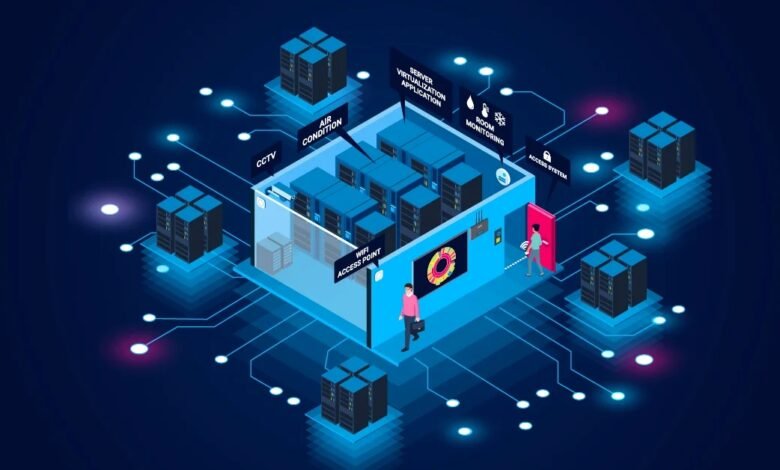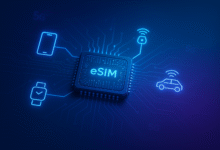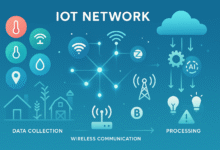IoT and Predictive Maintenance: Saving Millions for German Industries

In an era where efficiency defines competitiveness, German industries are rapidly embracing technological innovations. Among these, IoT and predictive maintenance stand out as transformative solutions, revolutionizing traditional maintenance systems and delivering tangible financial benefits. By leveraging data-driven insights, industries can now anticipate equipment failures before they happen, thus minimizing downtime, reducing repair costs, and optimizing operations.
What is IoT and predictive maintenance?
The Internet of Things (IoT) refers to the network of physical devices embedded with sensors, software, and connectivity that enables them to collect and exchange data. Predictive maintenance, on the other hand, uses this data to predict when machinery or equipment is likely to fail so that maintenance can be scheduled just in time.
When combined, IoT and predictive maintenance enable smart monitoring systems that continuously analyze machine health in real time. These systems can alert operators of anomalies, diagnose potential issues, and even trigger maintenance actions automatically.
The Need for Predictive Maintenance in German Industries
Germany is the manufacturing powerhouse of Europe, known for its precision engineering, automotive excellence, and industrial machinery. However, unplanned downtime in such complex production environments can cost companies thousands of euros per minute. Traditional maintenance models, such as reactive or preventive maintenance, often fall short in preventing these losses.
IoT and predictive maintenance have emerged as a critical strategy to mitigate such risks. The growing demand for operational reliability, safety, and efficiency in industries like automotive, aerospace, chemicals, and manufacturing makes predictive solutions not just beneficial but essential.
Key Benefits of IoT and Predictive Maintenance in Germany
1. Reduced Downtime and Production Losses
Predictive maintenance helps German manufacturers foresee problems before they occur. Sensors installed in machines detect minute changes in vibration, temperature, or pressure, signaling early signs of failure. By addressing these issues preemptively, companies can avoid unscheduled shutdowns and keep production lines running smoothly.
2. Cost Savings and Increased ROI
Although the initial investment in IoT infrastructure may seem high, the long-term financial gains far outweigh the costs. Businesses can save millions annually by reducing emergency repair costs, optimizing labor resources, and extending equipment life. Predictive models also minimize over-maintenance, which saves time and materials.
3. Enhanced Asset Life and Reliability
Predictive maintenance ensures that machinery is serviced only when necessary. This not only prolongs asset life but also enhances reliability and performance. German industries, especially those relying on high-value equipment like CNC machines, robotic arms, and turbines, greatly benefit from this optimized care.
4. Improved Worker Safety
By predicting failures and scheduling maintenance proactively, IoT and predictive maintenance reduce the risk of hazardous breakdowns that can endanger workers. This is crucial in sectors such as chemicals and energy, where equipment malfunctions can have severe consequences.
5. Real-Time Data-Driven Decision Making
IoT devices continuously gather data from machines, offering deep visibility into operations. Advanced analytics and machine learning algorithms interpret this data to provide actionable insights. German companies can thus make informed decisions in real time, enhancing their strategic agility.
IoT and Predictive Maintenance Use Cases in German Industries
Automotive Sector
Germany’s automotive giants like BMW, Volkswagen, and Mercedes-Benz are leveraging IoT to monitor assembly lines, robotic systems, and logistics. Predictive algorithms help identify potential issues in equipment like welding robots or paint booths, minimizing quality issues and line stoppages.
Manufacturing and Engineering
Precision manufacturing requires uninterrupted machine operation. Companies such as Siemens and Bosch use IoT-enabled solutions to monitor machine conditions, ensuring optimal calibration and performance while preventing costly breakdowns.
Energy and Utilities
Germany’s transition to renewable energy involves complex assets like wind turbines and solar plants. Predictive maintenance ensures these systems operate efficiently, reducing maintenance costs and preventing energy loss due to equipment failure.
Aerospace and Defense
In aerospace, reliability is non-negotiable. Aircraft manufacturers and suppliers use IoT sensors to monitor engines, hydraulics, and avionics, ensuring that every component meets safety standards and maintenance is timely and efficient.
How German Companies are Implementing Predictive Maintenance
Integration of IoT Platforms
German industries are investing in advanced IoT platforms such as Siemens MindSphere, SAP Leonardo, and Bosch IoT Suite. These platforms collect and analyze massive volumes of machine data to identify failure patterns and recommend maintenance schedules.
Adoption of AI and Machine Learning
Artificial intelligence (AI) and machine learning (ML) enhance predictive maintenance by enabling systems to learn from historical data and improve over time. German companies are increasingly deploying AI-driven tools to refine maintenance strategies.
Use of Digital Twins
Digital twin technology, where a virtual replica of a physical asset is created, allows real-time monitoring and simulation. German manufacturers use digital twins to test maintenance strategies and understand how machines will respond to different operational conditions.
Challenges in Adoption and How They Are Overcome
Data Privacy and Security
With so much data being collected and transmitted, security is a top concern. German companies adhere to strict GDPR standards and invest heavily in cybersecurity to protect sensitive operational data.
High Initial Investment
While the upfront cost of implementing IoT and predictive maintenance solutions can be significant, government subsidies, tax incentives, and long-term ROI make the investment worthwhile.
Skill Gaps
There is a growing need for data scientists, IoT specialists, and maintenance engineers. To bridge this gap, many German firms collaborate with universities and offer specialized training programs.
Future Trends: What Lies Ahead for IoT and Predictive Maintenance in Germany
Edge Computing
Processing data closer to the source (i.e., on the edge) will reduce latency and enhance real-time decision-making, which is vital for fast-paced manufacturing environments.
5G Connectivity
5G will further improve the efficiency of IoT systems by enabling faster, more reliable data transmission, crucial for time-sensitive predictive analytics.
Integration with ERP Systems
Combining predictive maintenance data with Enterprise Resource Planning (ERP) systems will help German companies achieve a fully integrated, smart manufacturing ecosystem.
Sustainability and Green Manufacturing
Predictive maintenance aligns with Germany’s sustainability goals by reducing energy waste, minimizing resource usage, and lowering the carbon footprint of industrial operations.
Conclusion
IoT and predictive maintenance are not just buzzwords but foundational pillars of Industry 4.0. In Germany, a country where precision, quality, and efficiency are paramount, these technologies are driving a significant industrial transformation. From reducing unplanned downtime to saving millions of euros annually, the benefits are clear and compelling.
As German companies continue to innovate and digitalize, IoT and predictive maintenance will play an increasingly central role in shaping a smarter, more resilient, and sustainable industrial future.











